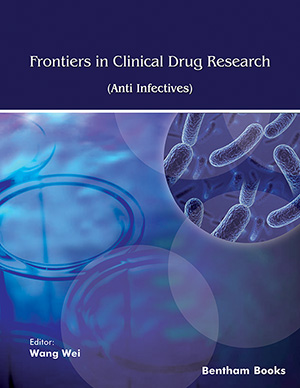Abstract
COVID-19 infection, caused by the SARS-CoV-2 virus, is associated with
substantial morbidity and mortality. COVID-19 infection has three distinct phases: 1,
early infection phase; 2, pulmonary phase; and 3, the hyperinflammatory phase.
Despite a major focus on vaccines and new therapeutics, existing drugs sharing some
known mechanistic with this virus, have also gained interest. The potential positioning
of three mature innovative drugs, which could be of potential use in this pandemic
environment, is discussed in this chapter: OM-85 and calcium dobesilate, and their salt
form etamsylate, have revealed anti-viral and anti-inflammatory properties. OM-85, a
bacterial extract originating from 21 pathogenic strains isolated from human lungs and
indicated for the prevention of recurrent respiratory tract infections, stimulates both
innate and adaptive immunity, resulting in non-specific loco-regional immune
responses. It has shown anti-viral activity in a number of virus infection models,
including influenza H1N1, rhinovirus, and more recently, coronaviruses. It has also
shown some immunoregulatory properties. Accordingly, there is a rationale for further
investigations on OM-85 to be used as prophylaxis for other respiratory infections and
potentially in long-COVID. For calcium dobesilate, currently indicated for the
treatment of microvascular diseases while preserving microvascular integrity via
antioxidant and anti-inflammatory properties, there are cumulating data that could
promote its potential use for the treatment during phase 2 to protect the vascular
endothelium. Calcium dobesilate has anti-viral properties and was recently shown to
interfere with the SARS-CoV-2 spike-protein binding to the ACE2 receptor.
Accordingly, one could also postulate to use it during phase 1. Etamsylate, an anti-haemorrhagic and antiangiogenic agent that improves platelet adhesiveness and
restores capillary resistance, is indicated for the prevention and treatment of capillary
haemorrhages. Considering its mechanism of action, etamsylate could be envisage for
use as potential treatment during phase 3 for viral-induced complications. Importantly, none of these afore mentioned drugs are currently approved for the prevention or
treatment of SARS-CoV-2 viral infection. Further, the conduction of well-designed
clinical trials is warranted.
Keywords: Angiogenesis, Bacterial Lysate, Calcium Dobesilate, Cell Attachment, Cell Entry, Comorbidities, Coronavirus Disease 2019, COVID-19, Drug Repurposing, Etamsylate, Immune System, Immunotherapy, Inflammation, Infection, OM-85, Respiratory Tract Infection, RTI, SARS-CoV-2, Severe Acute Respiratory Syndrome Coronavirus 2, Vascular Endothelium.






















